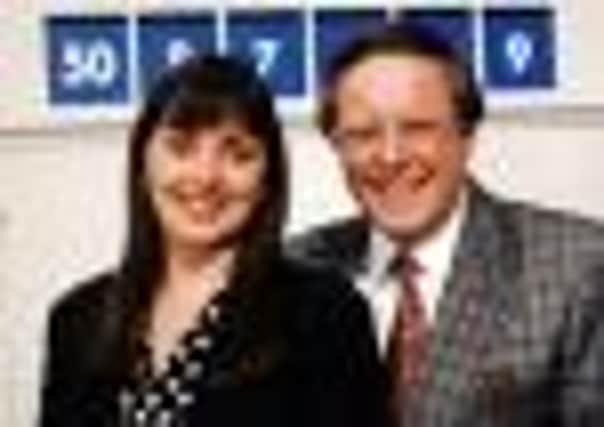How consonants and contestants became a TV constant


LIKE most legends, the early days of Countdown have become shrouded in a thin layer of mystery and myth.
Although most Britons only came to know of it when the gameshow became Channel 4’s first ever broadcast on November 2, 1982, its history stretched back further. Much further.
Advertisement
Hide AdAdvertisement
Hide AdThe concept behind Countdown came from a very similar French show, Des chiffres et des lettres, (which literally translates as Numbers and Letters) which has been running on the other side of the English Channel since 1965.
Its arrival over here is widely credited as being down to Marcel Stellman, a Belgian record executive who saw the show in France and thought it could work in the UK. But others maintain it was Frank Smith, an executive at Yorkshire Television who was abroad watching rugby when he first saw Des chiffres et des lettres. Which version is true is uncertain, but the latter would certainly explain why Countdown was made at the YTV studios in Leeds and why, long before it was aired on Channel 4, viewers in the White Rose county got a sneak preview of the format in its pilot form: Calendar Countdown.
It also explains why the late Richard Whiteley, one of Calendar news’s main anchors and a trained political journalist, came to become a gameshow host.
Leeds-born Kathryn Apanowicz was a long-time friend and his partner of 11 years.
Advertisement
Hide AdAdvertisement
Hide AdShe says: “He was very much a news man and then, all of a sudden, he was thrust into light entertainment. He just happened to be in the right place at the right time.
“If you’d have gone to Channel 4 at any other time and said: ‘We want the host to be a local news man’ they’d have laughed. But because the channel was launching they were just keen to get stuff on the screen.”
Partly through design, but largely by accident, Richard “three times nightly” Whiteley and the show became inseparable and quickly helped it garner cult status.
“Yes, it wasn’t the sexiest, most high octane viewing, but it was captivating.
Advertisement
Hide AdAdvertisement
Hide AdAnd, like the most successful TV shows, it quickly developed a male-female hosting duo in the form of Whiteley and Carol Vorderman.
Vorderman was selected because, as a Cambridge graduate, she had the brains as well as the looks to be on a TV show like Countdown. Her special talent was the numbers round, and her quick wit when faced with gags fired from Whiteley. In fact, she took on a life of her own, well beyond the show or, indeed Channel 4. By the 1990s she was reportedly one of the highest paid women on TV. Despite this, she continued working on Countdown right up until the noughties when, after Whiteley died as a result of septicaemia in 2005, she was asked to take a 90 per cent pay cut by producers. So Vorderman walked.
She wasn’t available to comment but her long-time friend Apanowicz doesn’t hold back when it comes to tabloid rumours that she’d become a money-grabbing diva who had to be nudged out the door.
“There was a hell of a lot of lies written about her, like how she was supposedly unpopular among the Countdown staff,” she says. “And I can categorically say that was absolute tripe. How come on her leaving do the whole crew threw her a leaving party, bought her the most beautiful bracelet and were all in tears when she left? You don’t do that if you don’t like somebody, do you?”
Advertisement
Hide AdAdvertisement
Hide AdThe post-Whiteley era of Countdown was characterised by a string of new arrivals, from Des Lynam to Des O’Connor and Jeff Stelling. Current host, The Apprentice’s Nick Hewer, has only been in the job nine months.
“It was a really difficult decision for me to go last year,” recalls Stelling “But I was juggling so many balls with my TV presenting that I’d rather put one down than drop one and make a mess of it.
“What I used to love about it, and why I think it’s lasted so long, is that it’s such a simple game and yet it’s so engrossing,.
“That’s why you get such a spectrum of people watching. I mean, you only had to look at the audience in the studio to see there was everyone from students to pensioners.”
Advertisement
Hide AdAdvertisement
Hide AdAside from the Vorderman controversy, the only other blemish on the story of Countdown was the decision to move filming of the gameshow from Leeds’s Burley Road studios to Manchester in 2009, breaking the last link in a long association with Yorkshire.
“It’s very sad that its not in Leeds anymore,” says Apanowicz “If Richard were alive he wouldn’t have allowed it to go.”